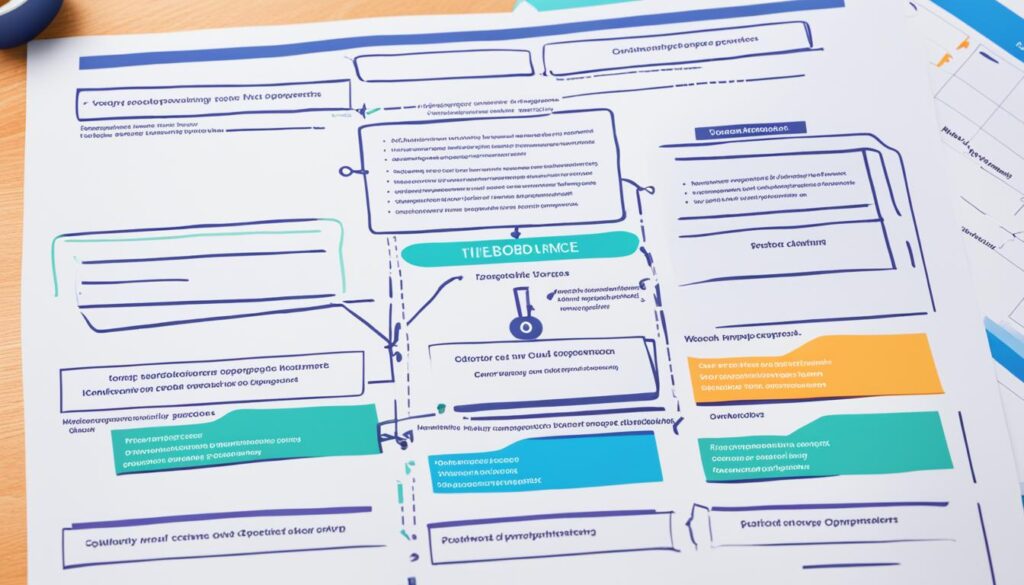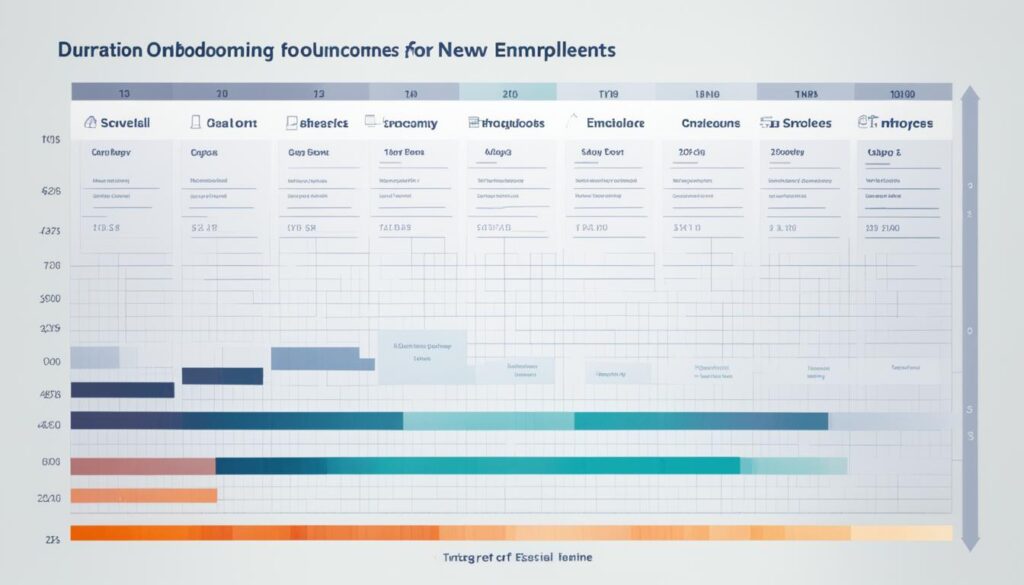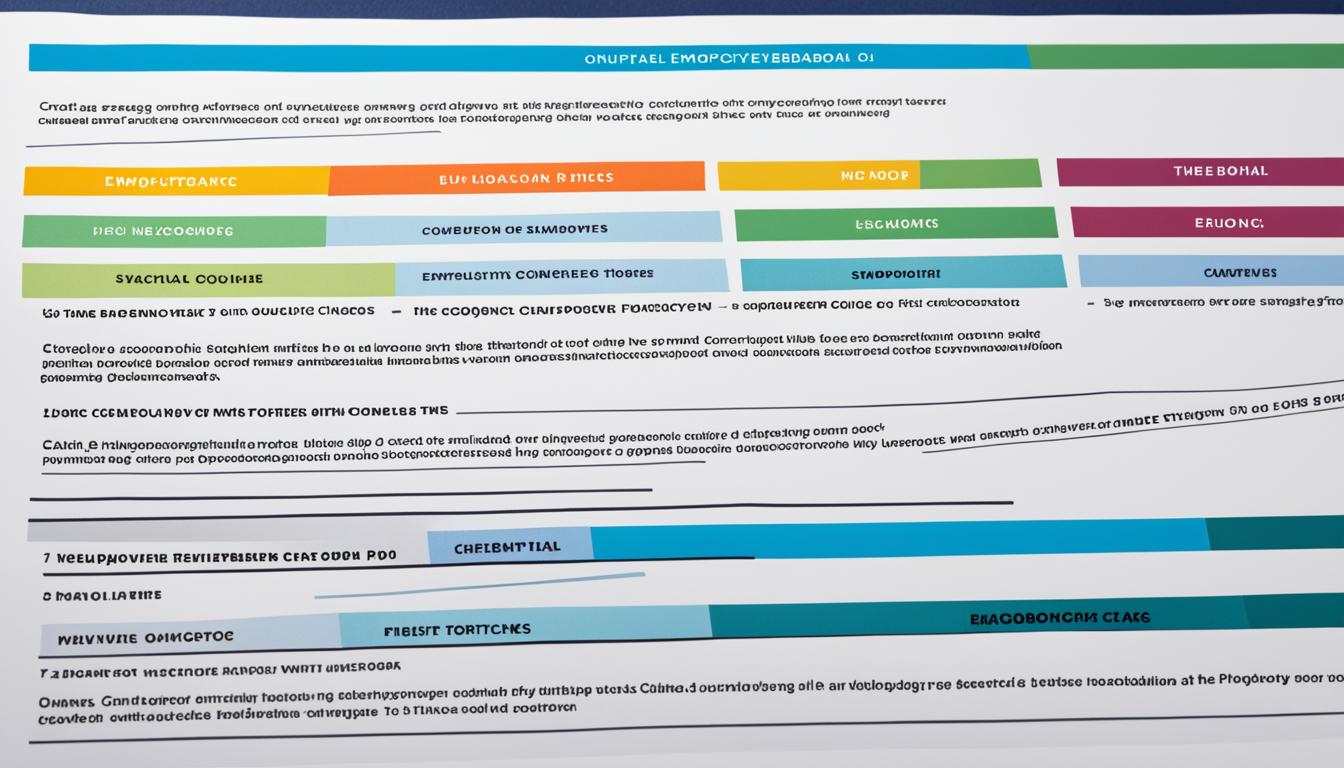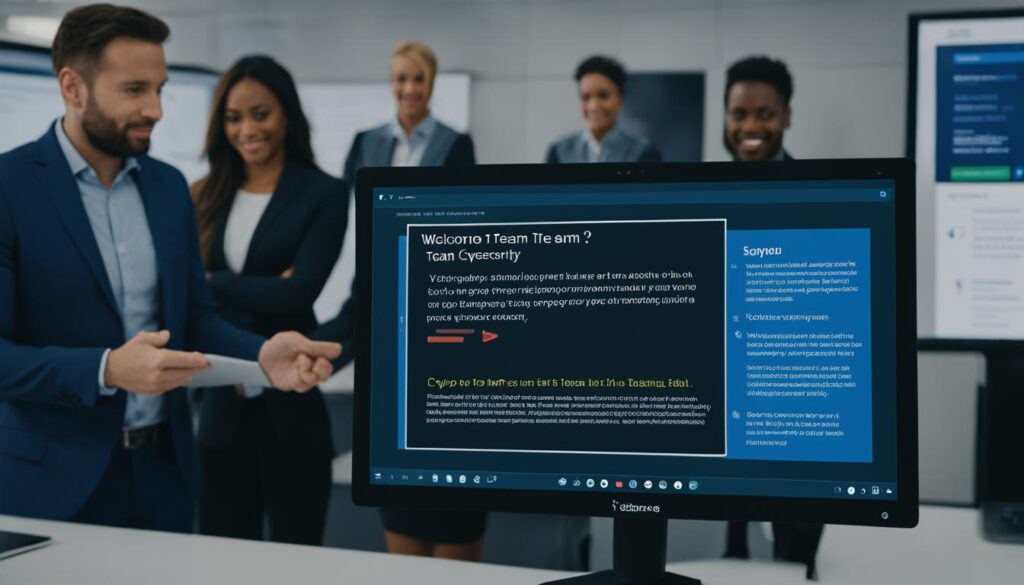On average, new hires tackle 54 tasks during their onboarding. This tells us how detailed and time-consuming the process is. Most HR experts say onboarding lasts between three to six months. However, some companies take more than six months to complete this phase.
The time it takes to handle the paperwork affects how long new employees want to stay. Almost all employees make up their minds about staying within the first six months. If companies extend onboarding to a year, they can boost job happiness. This allows new staff to work more effectively, feel at home in their jobs, and develop strong bonds with their coworkers.
Some companies take a month to get new workers through the HR process. Yet, about half breeze through it in a week. The wide range in experience could lead to some new hires quitting. Some nine percent leave due to a bad onboarding process.
To make onboarding smoother and quicker, businesses use tools like PeopleSpheres. These tools bring all HR needs to one place. This can cut down the time spent on paperwork by 1.5 hours per new employee, making onboarding better for everyone.
Key Takeaways
- The average new hire completes 54 activities during the onboarding process
- Onboarding typically takes 3-6 months, with some companies extending it beyond 6 months
- 90% of employees decide to stay or leave within the first 6 months
- Extending onboarding to a full year can improve job satisfaction and employee retention
- Poor onboarding experiences lead to 9% of new hires resigning
- Tools like PeopleSpheres can streamline the onboarding process and save time
Understanding the Employee Onboarding Process
Welcoming new hires is very important for your company. The process makes them part of the team, teaches them about their job and company, and helps them succeed. Making the onboarding process shorter and simpler helps make a good impression on new employees.
Defining Employee Onboarding
Employee onboarding is how you help new employees fit in. This includes learning about their role, company rules, and getting to know the team. A good onboarding process introduces them to the company’s goals and culture. This process should help new employees:
- Know their duties and what’s expected of them
- Meet important people in the company
- Get the tools, resources, and training they need
- Complete all the necessary paperwork for their start
- Start to feel like they belong and are valued
The Importance of a Comprehensive Onboarding Experience
A detailed onboarding can help the new employee and the company a lot. It helps in many ways:
- Makes new employees more likely to stay
- Helps them enjoy their work and feel connected to it
- Helps them become effective workers sooner
- Makes expectations clear and improves communication
- Encourages a good company culture and loyalty
By focusing on getting the onboarding paperwork right and making the process smooth, you help new hires succeed. Building a great onboarding experience shows you care about your team’s growth and happiness. This leads to a team that’s more involved and gets more done.
Factors Influencing the Duration of Onboarding Paperwork
The time to finish onboarding papers can change a lot. This happens because of a few main reasons. If you know these reasons, you can guess how long it will take to get employee documents done. You can also make the HR paperwork time shorter. This way, new people can start their jobs on time, with all their papers ready.

Company Size and Structure
The bigger and more complex your company is, the more time onboarding might take. Big companies with lots of departments and levels often need a broad employee onboarding paperwork plan. It’s for new workers to blend in well. But, it can mean HR takes more time to review and confirm the paperwork.
Industry-Specific Requirements
Some fields, like health care and finance, have strict rules that make onboarding take longer. They might need extra papers and training. This is to follow the industry’s rules. Here are a few examples:
- Doctors and nurses might have to show their licenses, certifications, and shot records
- Banks and such might do deep background checks and need certain clearances for new people
Compliance and Legal Considerations
Sticking to the law and company rules is very important in onboarding. The papers needed for a start date often cover:
- Checking if someone can work in the U.S. (like with I-9 forms)
- Filling out tax forms (like with W-4)
- Choosing benefits
- Agreeing to keep work stuff private
Filling out these papers right and fast is key. It stops any hold-ups in how long onboarding takes. Using digital onboarding can make the HR work smoother. This cuts down on how long it takes to finish all employee papers.
Pre-Boarding: Setting the Stage for Efficient Paperwork Processing
The process of welcoming a new employee starts before their first day. This pre-boarding phase goes from when they sign the offer letter up to their start date. During this time, HR and managers work to make sure paperwork and other documents are ready. They also focus on giving the new team member a warm welcome.
Having a strong pre-boarding plan can do a lot for your company. It can make employees want to stay and get involved. Research shows good communication during this time can make the onboarding process 83% better. By spending the right time here, you can keep about 82% of your new hires. This means fewer people will decide not to join after all.
Before a new employee starts, pay attention to certain things to make the paperwork go smoothly. These steps will make sure they get the information they need early:
- Get all their necessary tools, badges, and anything else they’ll need ready.
- Tell them about their first day, what to wear, and where to park.
- Give them the employee handbook and key company rules to look over.
- Start on essential paperwork like tax forms and setting up direct deposit.
Being proactive helps your new hires start ready and excited. This way, your company can focus on helping them adjust and make friends. It also makes the HR side run more smoothly. Everyone wins.
Teams that care about pre-boarding are 53% more likely to succeed. Working on this early creates a good start for everyone. It improves the experience for employees and makes the whole process of paperwork simpler.
The First Day: Tackling Essential Onboarding Documents
The first day at a new job marks an important step in your journey. You meet your colleagues and get to know the office. It’s vital to start working with the right tools. Still, the key is to fill out essential documents that kick off your job.
HR works hard to make paperwork quick for you. By dealing with the important forms on day one, they make sure you can blend in faster. This way, you get to explore and get used to your new workplace more easily.

Employment Contracts and Agreements
Your job contract is one of the first papers you’ll face. It explains your job’s ins and outs, your pay, and what you get. Before you sign, make sure you understand everything. This contract shapes your time at the company, so take it seriously.
Tax Forms and Direct Deposit Setup
You need to fill out tax forms like the W-4 and I-9. They help your boss figure out taxes and check if you can work in the U.S. You’ll also set up direct deposit for your pay. This makes getting paid smoother and faster.
Employee Handbook Acknowledgment
The employee handbook is like a rulebook for working there. You get a copy on day one and need to say you’ve read and understood it. This is an important step in getting all your paperwork done. It makes sure you know the company’s rules from the start.
Focus on these key documents on your first day to get off to a great start. But remember, onboarding isn’t just about forms. Your job journey gets support and help from your company all along the way.
The First Week: Continuing the Onboarding Journey
In your first week of the new job, you’re focused on training and support. The company works hard to make sure you have what you need to succeed. They streamline the paperwork and make it easier for you, cutting down on info overload.
Benefits Enrollment and Orientation
This week, you can sign up for benefits and get a full orientation. You’ll look at health insurance options and choose a retirement plan.
You’ll also learn about perks like wellness programs and discounts. The HR team ensures paperwork is done fast. This way, you can get used to the new job without extra stress.
Training and Development Plans
You’ll start your training in your first week. It’s designed to teach you what you need to do well in your job. You might learn about company rules, soft skills, and what the company values.
The company is investing in your future by training you well. They want you to succeed, so they’ve made a plan with your manager. This plan is based on your goals and what the company needs.
At the end of the week, you’ll talk alone with your manager. This is your chance to share how you feel, ask questions, and get feedback. Your manager will help make sure you have what you need and talk about how your learning is going. By talking and listening, the company hopes to build a great work environment where you can succeed.
Beyond the First Month: Ongoing Onboarding Support
Once the first month is over, your new employee should start to feel at home in their job. They will be able to lead projects on their own. This shows they’ve learned how things work at the company. It’s a good time to show them more about the company. This might include ways they can learn and grow in their job. Showing them clear ways to get ahead can make them feel important. It helps them see their future with the company. The onboarding process duration goes on after the first busy month. Ongoing help is key for their long-term success.
By the time 90 days come around, the employee and their boss should have a chat. They will discuss how things are going. This is when you can get their feedback about joining the company. They might have more to say now that they know the company better. Check how they’re doing with any final employee documentation and see if they need more tools. Keeping in touch and supporting them all the way through the new employee paperwork timeline builds a happy workplace. It also helps your new team member do well.
Don’t forget, the HR paperwork processing timeframe is just the start of their journey. Doing paperwork right is important, but so is making them feel welcome. Using technology can make the paperwork part easier. This way, they can focus on fitting in with the team. A good onboarding plan lasts longer than the first month. It leads to happier, more productive employees. This in turn helps your company succeed.
FAQ
How long does the average employee onboarding process take?
What factors influence the duration of onboarding paperwork?
When does the onboarding process typically start?
What essential documents should be completed on the first day of onboarding?
What happens during the first week of onboarding?
How long does onboarding support continue beyond the first month?
Why is a comprehensive onboarding experience important?
Author
-

Michael Chen's expertise lies in employee onboarding and training development. His methods have transformed new hire experiences, boosting engagement and long-term retention.
View all posts



